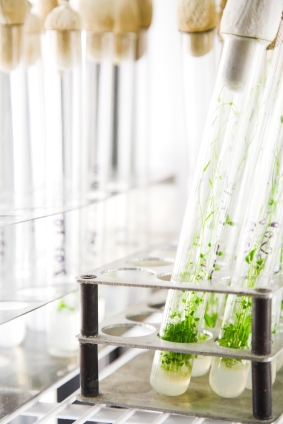 Cell free protein expression can be utilized for the analysis of: protein/protein interactions, protein nucleic acid interactions, analysis of post translational modifications and many other applications. The majority of these references are based on the characterization of mammalian proteins.
Cell free protein expression can be utilized for the analysis of: protein/protein interactions, protein nucleic acid interactions, analysis of post translational modifications and many other applications. The majority of these references are based on the characterization of mammalian proteins.
However there are several references using TNT-based systems (either rabbit reticulocyte lysate or wheat germ based) for the analysis of proteins from plants, examples include:
Zhang, Z. et al. (2011) Plant Cell. 23. 273–88. Using the Beet serve curly top virus C2 protein as bait in a yeast –two hybrid screen, a C2-interacting protein S-adenosyl-methionine decarboxylase 1 (SAMDC1) was identified from an Arabidopsis thaliana cDNA library. In conjunction with other techniques the interaction was confirmed and characterized using TNT in conjunction with GST pull-down assays.
Huizinga, D. et al. (2010) Molecular Plant 3,143–55. In the characterization of the Arabidopsis farnesycyteine lysase a protein larger than predicted molecular mass was observed via gel analysis. In order to determine if this was due to N-glycosylation of the protein, the FC lyase protein was synthesized using the TNT system in the presence or absence of canine pancreatic microsomal membranes.
Gao, M-J, et al. (2009) The Plant Cell 21, 54–71. The seed maturation program is repressed during germination and seedling development so that embryonic genes are not expressed in vegetative organs. Noted in this reference was evidence that ASIL1 functions as a negative regulator of a large subset of Arabidopsis embryonic and seed maturation genes in seedlings. Electrophorectic mobility shift assays using protein expressed in the TNT system and labeled DNA oligos corresponding the various regions of the 2S3 promoter were one of the techniques used to characterize the specific binding to the this promoter region.
Tanz, S. et al. (2009) Plant Physiology 150, 1515-29. Carbonic anhydrase catalyzes the reversible hydration of CO2 and is involved in both C3 and C4 photosynthesis, however its role and intercellular and intracellular locations differ between C3 and C4 plants. Three different cDNA encoding distinct β-carbonic anhydrases were isolated from leaves of the C3 plant Flaveria pringle. To determine if either of the proteins encoded by the cDNA clones are targeted for chloroplasts, Labeled proteins were expressed using the TNT system and subjected to chloroplast protein import analysis.

Interesting. This was my First time to this blog. Appreciate you sharing this. I am going to revisit this website.